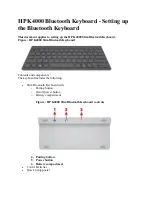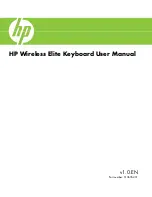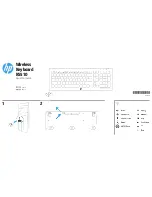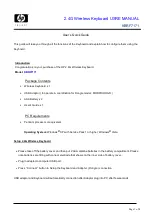
Editing Programs
QuadraSynth Reference Manual
85
Effects Level
The function determines how much of the selected drum is being routed to the
effects processor, and on which bus. Quad Knob [1] adjusts the Effect Send level (00
to 99), and Quad Knob [2] selects the Effects Bus (1, 2, 3 or 4). Use Quad Knob [4] to
select the drum (1Ñ10) you wish to edit.
Pitch
Pitch (-12.00 to +12.00)
The function lets you transpose the selected drum up or down one octave in micro-
step (1/4th of a half step) increments, and lets you modulate the drumÕs pitch with
velocity. Quad Knob [1] determines the tuning of the selected drum (
±
12.00). Use
Quad Knob [2] to select how much you wish velocity to affect the selected drumÕs
tuning (0Ñ7). When this value is set to 7, the drum will be played sharp when the
associated note is played hard; when played soft, the drumÕs tuning will be
unaltered. Use Quad Knob [4] to select the drum (1Ñ10) you wish to edit.
Filter
Velocity>Filter (0 to 3)
The Filter function lets you control the ÒbrightnessÓ of the selected drum by
modulating the filter frequency with . Use Quad Knob [1] to set the Velocity>Filter
parameter (0Ñ3). When set to 3, playing the associated note will result in a brighter
sound (more high frequencies), while playing softer will result in a duller sound (less
high frequencies). When this parameter is set to 0, velocity will have no affect on the
filter. Use Quad Knob [4] to select a drum (1Ñ10) to edit.
Amp
Velocity Curve (13 choices)
Quad Knob [1] in the Amp function lets you select one of 13 velocity curves. This
determines how the drum will respond to the dynamics of your playing the
keyboard. Use Quad Knob [4] to select the drum (1Ñ10) you wish to edit.
A LINEAR curve is the norm, whereby the increase in level is equal to the increase in
velocity; the velocity values increase as you play harder. Many of the Velocity
Curves make up sets to be used by 2, 3 or 4 drums in order to facilitate velocity
crossfading, whereby a different drum is played depending on how hard or soft the
keyboard is played. However, each drum must be in a different sound layer of the
Program in order to be stacked on the same note.
If you want to create your own velocity crossfading Program, assign the related
versions of the same drum samples (ÒConga HighÓ and ÒConga LoÓ) the same key in
different Program Sound layers, then use the appropriate velocity curves for each
drum (in a three-way velocity split, drum 1 would use curve Ò1 of 3,Ó drum 2 would
use curve Ò2 of 3Ó while drum 3 would use Ò3 of 3Ó).
For more details about the 13 velocity curves, see the illustration on page 64.
Содержание QuadraSynth
Страница 1: ...ALESIS QuadraSynth S4 QuadraSynth Reference Manual...
Страница 3: ...2 QuadraSynth Reference Manual...
Страница 11: ...Setting Up 10 QuadraSynth Reference Manual...
Страница 16: ...Your First Session with the QuadraSynth QuadraSynth Reference Manual 15...
Страница 22: ...Your First Session with the QuadraSynth QuadraSynth Reference Manual 21...
Страница 23: ......
Страница 30: ...Connections QuadraSynth Reference Manual 29...
Страница 31: ......
Страница 89: ...Editing Programs 88 QuadraSynth Reference Manual...
Страница 117: ......
Страница 121: ...MIDI Transfer And Storage Operations 120 QuadraSynth Reference Manual...
Страница 125: ...APPENDIX A Troubleshooting 124 QuadraSynth Reference Manual...
















































